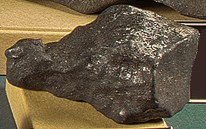Bruderheim facts for kids
Quick facts for kids
Bruderheim
|
|
|---|---|
|
Town
|
|
| Town of Bruderheim | |
| Country | Canada |
| Province | Alberta |
| Region | Edmonton Metropolitan Region |
| Census division | 10 |
| Municipal district | Lamont County |
| Adjacent specialized municipality | Strathcona County |
| Incorporated | |
| • Village | May 29, 1908 |
| • Town | September 17, 1980 |
| Area
(2021)
|
|
| • Land | 9.28 km2 (3.58 sq mi) |
| Elevation | 637 m (2,090 ft) |
| Population
(2021)
|
|
| • Total | 1,329 |
| • Density | 143.2/km2 (371/sq mi) |
| Time zone | UTC−7 (MST) |
| • Summer (DST) | UTC−6 (MDT) |
| Highways | Highway 45 Highway 15 |
| Waterway | North Saskatchewan River |
Bruderheim is a small town in Alberta, Canada. It is part of the Edmonton Metropolitan Region. The town is located about 47 kilometers (29 miles) northeast of Edmonton. It sits just north of where Highway 15 and Highway 45 meet.
The name "Bruderheim" comes from two German words. "Bruder" means brother, and "-heim" means home. So, the town's name means "Home of the Brother."
Contents
Discovering Bruderheim's Past
Bruderheim was first settled in 1894. A group of German Moravians from a region called Volynia in Ukraine moved here. They helped build the community we see today.
The Bruderheim Meteorite
On March 4, 1960, something amazing happened near Bruderheim. A meteorite fell from space! This event is very famous among scientists. A piece of this space rock is known as the Bruderheim meteorite.
Bruderheim on Screen
Did you know Bruderheim has been in a movie? The town's arena was used as a filming spot. This happened for the 2005 film Santa's Slay.
Who Lives in Bruderheim?
Knowing how many people live in a town helps us understand its size. This is called its population.
Bruderheim's Population in 2021
In 2021, Statistics Canada counted the people living in Bruderheim. There were 1,329 people living in the town. They lived in 515 homes. This was a small increase from its population in 2016.
The town covers an area of about 9.28 square kilometers (3.58 square miles). This means there were about 143 people living in each square kilometer.





